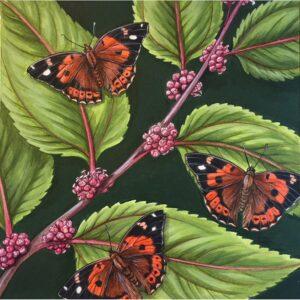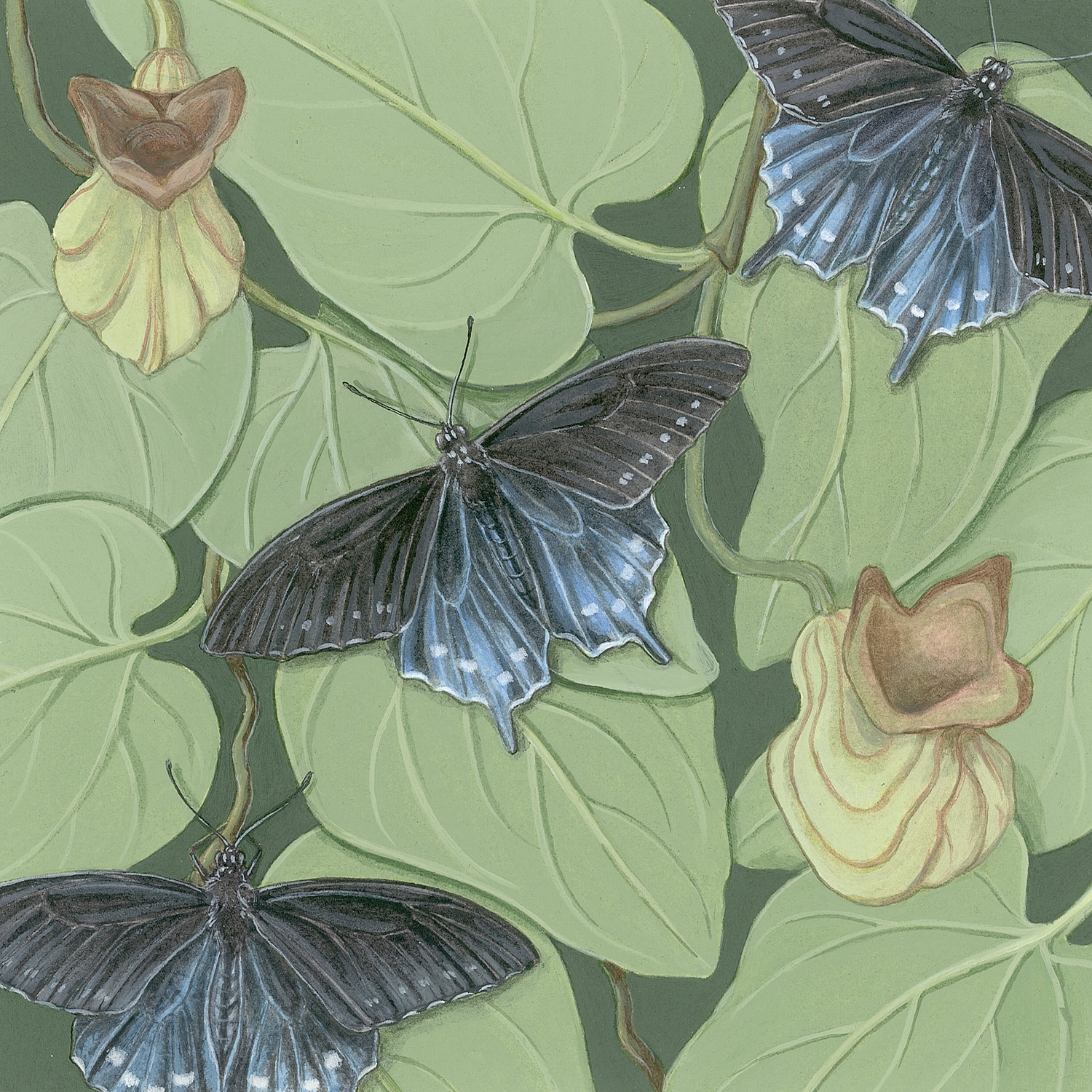I recently read the excellent book The Language of Butterflies by Wendy Williams. It was a fascinating read about the natural history and cultural importance of butterflies, with a section devoted to the migration of monarch butterflies in North America. There’s also a lovely chapter about my favorite botanical/entomological artist in history, Maria Sibylla Merian, whose research about and illustrations of insects are still inspiring today.

Kamehameha Butterfly and Māmaki
Vanessa tameamea and Pipturus albidus
Acrylic on watercolor paper, 2019
5.5 x 5.5”
I’ve been working on a piece about butterflies and host plants, and one of the things I learned during my research is that if you want to support healthy populations of butterflies, you can’t just plant nectar plants—you also need to include host plants for the caterpillars that will grow up to be butterflies. After all, butterflies are particular about where they lay their eggs, and spend a good portion of their lives as larvae (caterpillars) and pupae (in a chrysalis). Many adult butterflies only live a couple of weeks, but really they’ve already lived for a while and undergone several major changes before emerging from their chrysalises.
Right now, many butterfly species where I live have gone into the pupal phase, preparing to wait out the short days and colder temperatures of winter inside the protective shell of the chrysalis. Inside, they are undergoing an astonishing transformation, from a soft-bodied, leaf-chewing caterpillar to a winged, nectar-sipping butterfly. In the spring, when nectar plants start blooming again, adult butterflies will emerge to flit from flower to flower and start the cycle over again.
I find the idea of dormancy to be especially intriguing this time of year, as we head into the colder months and spend more time indoors. For the butterflies, the pupal phase looks quiet and peaceful from the outside, but metamorphosis is happening within the chrysalis. Perhaps this could be inspiration for internal change for a human, snug inside a cozy house on an autumn day—like reading a book that shift’s a person’s perspective on the insect life all around us.


